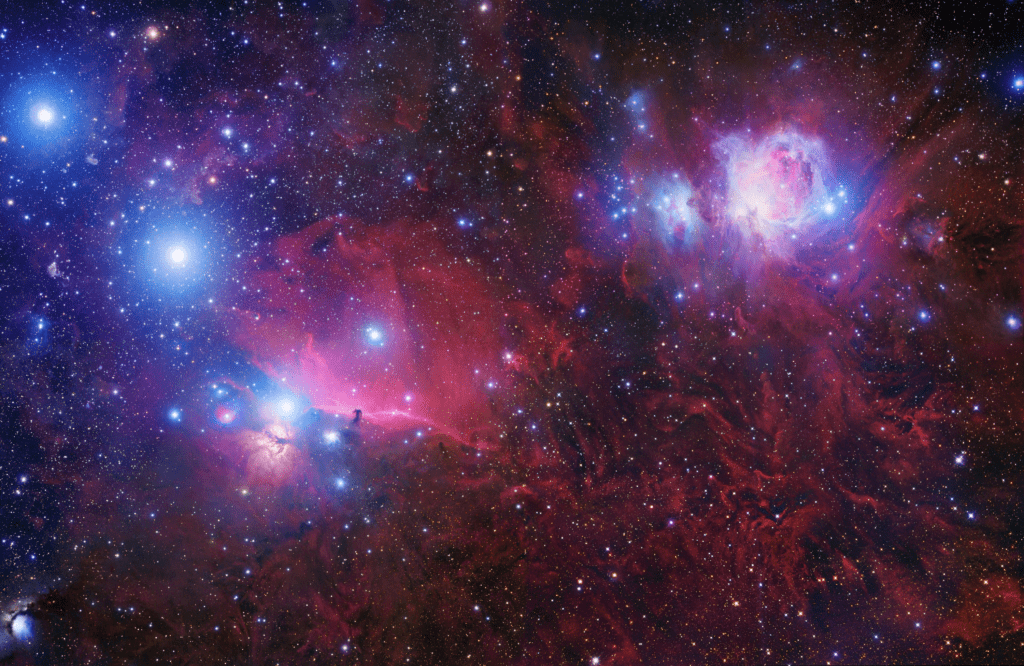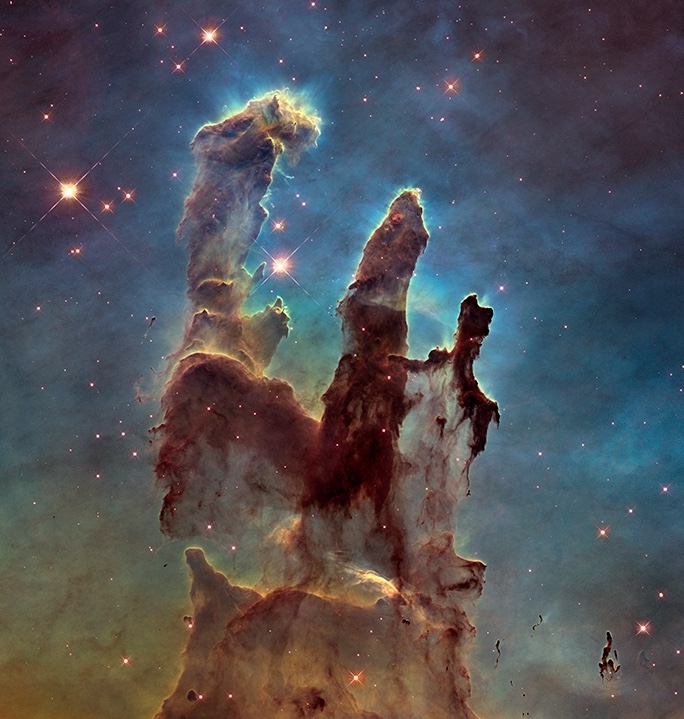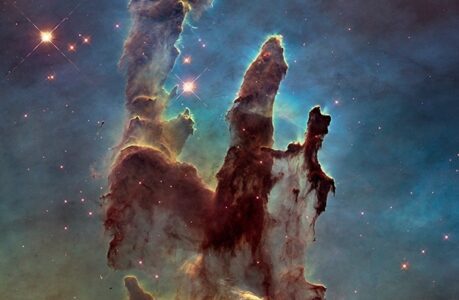Stellar nurseries
Stellar nurseries, the enigmatic crucibles of the universe, are where stars are born. These celestial factories churn out the blazing giants that illuminate our night skies and shape the very fabric of our cosmos. In this exploration, we will delve into the captivating world of stellar nurseries, unraveling their mysteries and discovering the profound impact they have on the cosmos. Join us on this cosmic journey as we venture into the heart of these stellar cradles.
The Cosmic Womb
What Are Stellar Nurseries?
Stellar nurseries are immense regions within galaxies where the process of star formation takes place. These regions are characterized by dense clouds of gas and dust, often stretching across light-years. Here, gravity plays the role of the cosmic midwife, gradually pulling together the materials needed to form new stars.
The Stellar Life Cycle
Stellar nurseries are not static; they are dynamic ecosystems within galaxies. Stars are born, live their lives, and eventually die, releasing their enriched materials back into the nursery. This recycling process is crucial for the creation of future generations of stars and celestial bodies.
The Spark of Creation
Protostars: The Birth of a Star
At the heart of a stellar nursery, a remarkable transformation occurs. Deep within the dense clouds of gas and dust, a protostar begins to form. This embryonic star gathers material from its surroundings, gradually increasing in size and temperature. Over millions of years, it evolves into a fully-fledged star, ignited by the fires of nuclear fusion.
Stellar Siblings
Stellar nurseries often give rise to multiple stars simultaneously, resulting in star clusters. These clusters can contain dozens or even thousands of stars, born from the same stellar nursery. The study of these clusters provides valuable insights into the conditions and processes governing star formation.
The Stellar Nursery’s Tools
The Role of Gravity
Gravity is the driving force behind star formation in stellar nurseries. It acts as a cosmic sculptor, pulling together gas and dust particles, compressing them until the pressure and temperature are high enough for nuclear fusion to occur. Without gravity, the birth of stars as we know it would be impossible.
Magnetic Fields: The Cosmic Choreographer
Magnetic fields play a crucial role in shaping the dynamics of stellar nurseries. They guide the flow of material within these regions, influencing the direction and speed at which stars form. Understanding the interplay between magnetic fields and gravity is essential to deciphering the mysteries of star birth.
Stellar Nurseries in Our Cosmic Neighborhood
Orion Nebula: A Stellar Wonderland
One of the most famous stellar nurseries is the Orion Nebula, located within the Orion Molecular Cloud Complex. Visible to the naked eye, the Orion Nebula is a stellar nursery par excellence, hosting a rich assortment of young stars and protostars. Astronomers have closely studied this region, providing a wealth of insights into the star formation process.

Learn more about the Orion Nebula
Eagle Nebula: Pillars of Creation
The Eagle Nebula, also known as Messier 16, is another iconic stellar nursery. Immortalized in the “Pillars of Creation” image captured by the Hubble Space Telescope, this region showcases towering columns of gas and dust where new stars are being born. The stunning imagery from the Hubble Space Telescope has made the Eagle Nebula a favorite among space enthusiasts.
Carina Nebula: A Cosmic Nursery in Detail
Situated in the Carina constellation, the Carina Nebula is a stellar nursery that has drawn the attention of astronomers for its intricate structures and active star-forming regions. The colossal Eta Carinae star system, one of the most massive binary systems known, resides within this stellar nursery. Its dramatic behavior provides a window into the lives of massive stars.
What other Stellar Nurseries are easily visible from Ireland
While many stellar nurseries are visible from Earth, their visibility from Ireland, or any other location on the planet, depends on various factors such as the time of year, the location of the observer, and the equipment used for observation.

In Ireland, due to its latitude and the prevalence of cloudy skies, some stellar nurseries are more easily observed than others. Here are a few notable stellar nurseries that can be observed from Ireland:
- Lagoon Nebula (Messier 8): The Lagoon Nebula, located in the constellation Sagittarius, is a stunning stellar nursery visible from Ireland during the summer months. This nebula is easily spotted with binoculars or a small telescope and appears as a bright, luminous cloud of gas and dust with a distinct lagoon-like shape. It’s a fantastic target for stargazers looking to explore star-forming regions.
- Pleiades (M45): The Pleiades, also known as the Seven Sisters, is a star cluster that contains numerous young, hot stars. It is located in the constellation Taurus and is visible from Ireland during the winter months. The cluster is easily seen with the naked eye as a small, bright grouping of stars.
- North America Nebula (NGC 7000): The North America Nebula, situated in the constellation Cygnus, is another captivating stellar nursery that can be seen from Ireland, especially during the summer and early autumn. It derives its name from its resemblance to the continent of North America. This nebula is faint but can be observed with binoculars or a telescope equipped with a hydrogen-alpha filter.
- Heart Nebula (IC 1805): The Heart Nebula, located in the constellation Cassiopeia, is a lesser-known but visually striking stellar nursery. It is visible from Ireland during the autumn and winter months. The nebula’s shape resembles a heart, and it is best observed with a telescope and narrowband filters that enhance the visibility of its intricate details.
- Rosette Nebula (Caldwell 49): The Rosette Nebula is located in the constellation Monoceros and is another stellar nursery that can be observed from Ireland. It is best seen during the winter months and is often visible to the naked eye under dark skies. Binoculars or a telescope can reveal its distinctive rose-like shape.
- Cygnus X: Cygnus X is a massive star-forming region located in the constellation Cygnus, which is well-placed for observation from Ireland during the summer months. While it may not be visible with the naked eye, it can be captured using binoculars or telescopes equipped with specialized filters for observing nebulae.

Remember that to observe these stellar nurseries effectively, it’s essential to find a dark and light pollution-free observing location. Additionally, using binoculars or a telescope can greatly enhance your ability to see the intricate details of these celestial wonders. Stargazing enthusiasts in Ireland can also consider joining local astronomy clubs or societies, which often organize group observing sessions and provide valuable guidance on celestial observations.
The Impact of Stellar Nurseries
Stellar Nurseries and Galactic Evolution
Stellar nurseries are not just isolated cosmic cradles; they play a crucial role in the evolution of galaxies. The stars born in these nurseries release energy, radiation, and stellar winds that can shape the surrounding environment. They also contribute heavy elements, synthesized within their cores, to the interstellar medium, enriching it for future generations of stars.
The Birth of Planetary Systems
Stellar nurseries are not only responsible for the creation of stars but also for the formation of planets. The leftover materials in a stellar nursery often coalesce to form planetary systems like our own solar system. Understanding the conditions within these nurseries is fundamental to unraveling the mysteries of planetary formation.
The Future of Stellar Nursery Exploration
Cutting-Edge Technologies
As technology continues to advance, astronomers have access to increasingly sophisticated tools for studying stellar nurseries. Space telescopes like the James Webb Space Telescope promise to reveal even more about these enigmatic regions by peering through the obscuring veils of gas and dust that shroud them.
Citizen Science
Stellar nurseries are not just the domain of professional astronomers. Citizen scientists around the world contribute to our understanding of these cosmic wonders. Platforms like Zooniverse provide opportunities for enthusiasts to help analyze data and make important discoveries in the field of astrophysics.
Stellar Nurseries
In the vast expanse of the universe, stellar nurseries stand as the cradles of creation, where the magic of star formation unfolds. These cosmic wonders not only give birth to stars but also shape the destiny of galaxies and the potential for life beyond our planet. As technology advances and our understanding deepens, we can only imagine the extraordinary revelations that await us in the heart of these stellar nurseries. The cosmos continues to beckon, inviting us to explore its mysteries and uncover the secrets of its birthplaces of wonder.

